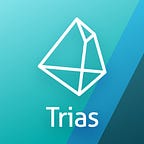How do First Principles Influence My Thinking on Containers?
Part Ⅳ of Chapter Three The Container Structure in the IT Field
TL; DR
Virtualization ushers in the Era of Cloud Computing. Traditional technology virtualizes physical hardware with hypervisors; containers virtualize operating systems rather than the underlying hardware. Look back at its trajectory, get down to its bottom, and face directly at the challenges. Only by doing that, can we work out an optimized solution.
The Silicon Valley Iron Man Elon Musk, CEO of Tesla, and SpaceX, pointed out in an interview that success lies in the First Principles Thinking. It means boiling things down to “the most fundamental truths” and then reasoning up from there. He encourages people to break the situation into the fundamentals and walk from the bottom up.
Prior chapters intend to peel off the IT “skin” and pore deep into details. Microservices, the core concept of solutions, transform how people think. This article touches more upon containers, shedding light on technical methods and means. DevOps emphasizes cultural philosophies and R&D procedures.
The Technology of Virtualization
Virtual machines (VMs) reveal a new chapter, the Era of Cloud. VMs establish a virtualized computing environment. They have emerged for a long time, regarded as basics for the 1st generation of cloud computing. One or more virtual “guest” machines/operating systems run on a physical “host” machine. A VM interacts with the physical machine through the lightweight software, hypervisor, sometimes called a virtual machine monitor (VMM). A VMM isolates VMs from each other and allocates CPU, memory, and storage. Two star VMs are VMware and OpenStack.
Virtual machines may take up a lot of system resources of the host machine and several minutes to start, being many GBs in size. A single machine generally supports dozens of them. It can be consuming to migrate VM-based applications, which are developed for specific operating systems. Thus, migrating applications and operating systems must go hand in hand. Besides, the hypervisor distributes hardware resources dedicated to virtual machines as it is set up.
Containers, however, are not bothered by these drawbacks. Both VMs and containers represented by Docker rest upon virtualization, with the latter being lightweight. Users can feast on faster resource allocation and faster availability of new applications on containers due to the removal of hypervisors.
Strengths of Containers
- Utilizes system resources more efficiently
- Starts faster
- Ensures environmental consistency
- Delivers and deploys continuously
- Migrates easily
- Improves reusability, looses coupling, maintains and scales easily
- Runs with sandbox mechanism, enhances security
Traditionally, VMMs virtualize the physical hardware. Each VM comes with a separate guest operating system, a virtual copy of the hardware specific for that operating system, applications, and associated libraries and dependencies. Virtual machines with different operating systems can run on the same physical server. For example, VMware VM can run next to Linux VM and Linux VM can run next to Microsoft VM, etc.
Containers are virtualized operating systems (usually Linux or Windows), instead of the underlying hardware. A single container is packed only with applications, libraries, and dependencies. Distinct from VMs, they are small, fast, and portable. Such that, containers live on features and resources from the host operating systems, saving the trouble to build guest systems for each instance.
The Most Optimized Architecture Carrier
With containers, developers can optimize CPU and memory utilization of physical machines as they do with virtual machines. Containers march far ahead, as the optimized carrier for microservices. Microservices and containers are almost a perfect match. An omnipotent being transmits into several specialized beings as the monolithic architecture breaks down into microservices. Each distinct service lives in an isolated container, enjoying the most flexibility.
Servers will eventually go on the path of virtualization for their low cost, high utilization, strong flexibility, dynamic scheduling, and more. One server can be installed with several containers, each running distinct service programs. The containers can be created or destroyed freely. Their size and strength may enlarge or shrink without downtime, striking a dynamic balance between performance and power consumption. Thus, containerization becomes the ultimate form of cloud computing.
Containers cannot give their full play on a single machine. Only clusters bring the best out of their isolation mechanism, resource allocation, and arrangement management. In the trending IT field, holistic applications have long become a thing of the past. Today, applications are composed of individual containerized components — microservices. Applications function as preset with coordinated components. Old-school IT architecture reminds people of old-fashioned factories; containerization is furbished like modern factories. We work to build up intelligent unmanned factories, where containers and applications are controlled and managed in an efficient, automatic, and orderly manner. We envisage that automation facilitates resource scheduling, deployment, and operation, service discovery, scaling up/down, etc. for containerized applications. That being said, these great visions still pose fresh challenges for the industry’s future.
The Writer says...
NetX aims at building the Web3 organism. We try to figure out solutions confronted by the present IT industry. To do that, we will look into every module of it to find out setbacks. Then we’ll focus on finding solutions through experiments. It’s a dynamic evolving process. To get the best solution, we have to be clear about the problems and this will be the main idea of Chapter Three. It makes me feel excited when thinking about sharing my thoughts and I do invite you to join me in this exploration and contribute to the evolvement of NetX.📚 Must Reads
NetX series 1.1 | NetX series 1.2 | NetX series 1.3 | NetX series 2.1 | NetX series 2.2 | NetX series 2.3 | NetX series 3.1 | NetX series 3.2 | NetX series 3.3
NetX, the Chain-Native Internet for the Digital Living of Trustworthy and Reliable Intelligent Autonomous Systems (Trias)
Triathon | Ethanim | Tusima | Behemotum | Octavius | Leviatom |Divina
New to trading? Try crypto trading bots or copy trading
Join Coinmonks Telegram Channel and Youtube Channel learn about crypto trading and investing
